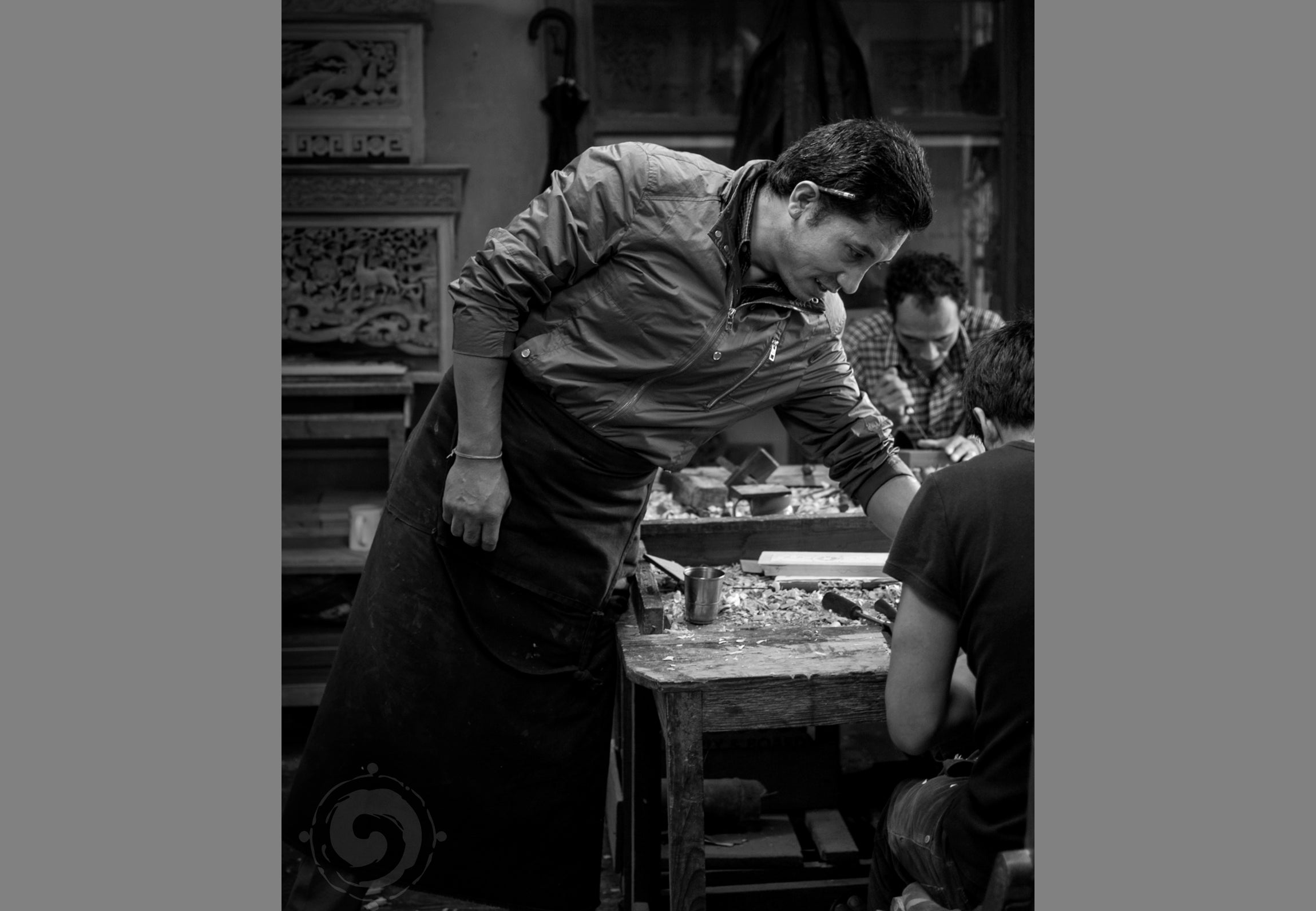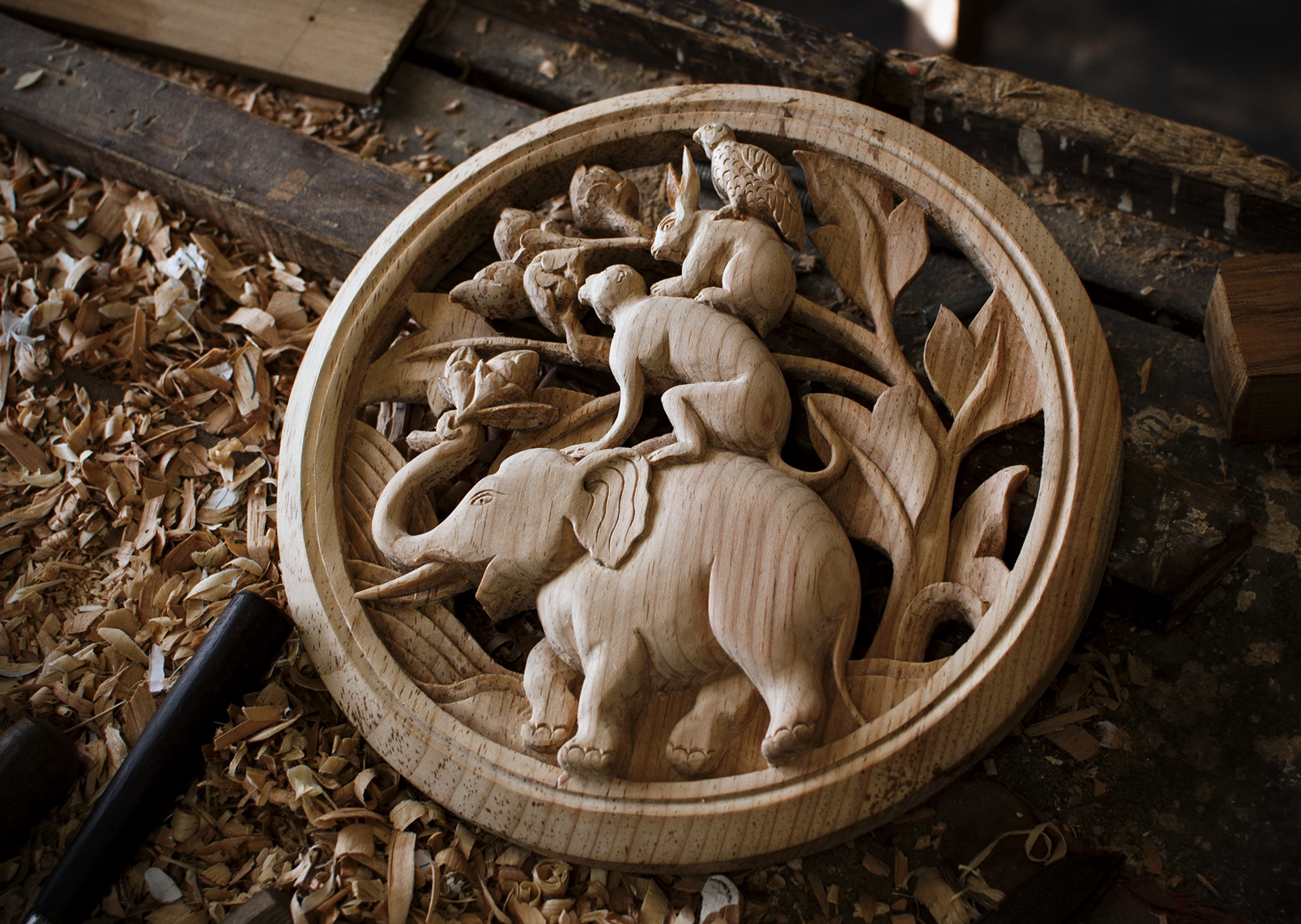
Interviews with Tibetan Craftsmen - Wood Carving
Norbulingka has been training artisans in traditional crafts since 1995, giving new purpose and employment to many young Tibetans in exile. We interviewed a few, who have been apprenticed since they were very young, to better understand and appreciate the work they have devoted their lives to.
Continuing with our series – Interviews with Traditional Craftsmen, we bring the focus to the art, the artists and the creative process.
Today, we speak with Gyaltsen currently the master artist of Norbulingka’s woodwork department. He trained as an apprentice, worked as a woodcarving artisan for many years, until he became the master of the woodcarving section in 2010, heading a team of about 10 individuals. Gyaltsen was born in Ngamring, a region in U-Tsang, Tibet in 1976. Like many families in that area of Tibet, his family was both herders and farmers, and he spent the early years of his childhood helping in the fields and looking after the family flocks. Gyaltsen’s father also worked as a stone mason, trained in the special Tibetan skill of masonry where craftsman expertly fit together stone blocks without the use of mortar.
Please tell us a bit about yourself and your journey into the art form of Tibetan woodcarving.
At the age of fifteen, I travelled from my village in Tibet to Lhasa to learn carpentry. Many youngsters in my village aspired to learn carpentry, as there was never a shortage of work for a skilled craftsman. I spent three years in Lhasa as an apprentice and then one day, I received a call from my brother who had already arrived in India, encouraging me to join him. My brother, who had begun working at Norbulingka, explained that Norbulingka had a woodworking section headed by a very knowledgeable master and he thought this would be a great opportunity for me to further my skills.
So, in 1998 I came to India to join Norbulingka under the instruction of Choe Phuntsok. Our late master, Choe Phuntsok’s curriculum was unique in that it taught both carpentry and carving, traditionally considered separate skills. After a six-year course, I became a professional artist, and worked together with the carving team creating Norbulingka’s line of carved products such as incense burners and nomad tables, as well as special commissions.
How do you feel about your work? Did your interest grow with your skill?
Since my childhood I was interested in woodwork, so naturally, I feel very happy working with wood. I have a deep respect for this art which is way beyond words and truly believe that it is crucial to preserve not only Tibetan artistic tradition and designs as a whole, but also the individual methods. For example, although the design and proportions of a flower in a thangka painting may be the same as in a woodcarving, the rendering of each is an entirely different process that is unique to the particular skill, and so it is essential that practical knowledge be passed down as well as knowledge of designs and proportions.
Do you remember any piece in particular that you think would be a favorite piece you made?
I love making thrones for spiritual lamas and Tibetan altars and cabinets. So, I would say mostly traditional pieces with religious significance as it gives me a deep sense of belonging and keeps me connected to my roots. I remember we worked on a special carved throne set for His Holiness the Dalai Lama, commissioned by Gyumed monastery based in South India. The piece had exquisite carvings and details and I think it was by far one of the best pieces that Norbulingka has made. I felt extremely happy to be a part of that team under the supervision of our master Choe Phuntsok, who I had the privilege of learning and working with for many years.
I believe that it is extremely important to preserve the tradition of Tibetan woodcarving, because it is through the various customs and traditions that an entire culture is preserved, and like all Tibetans, I wish to see Tibetan culture flourish for many centuries to come.












